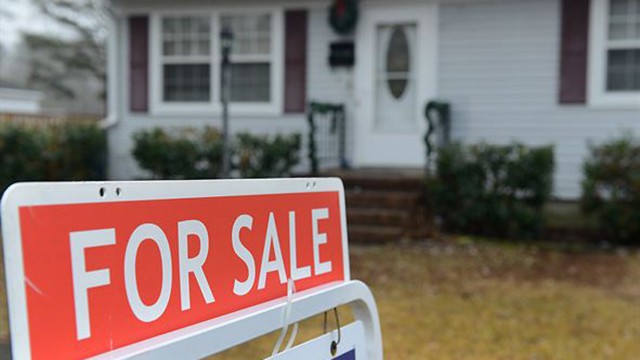Home Sales Finally Creeping Back Up in Halton and Surrounding Cities
Published April 16, 2018 at 6:22 pm

While home prices have inched back up month-over-month in Oakville, Burlington, Milton, Toronto and other GTA cities, sales have been slow.
While home prices have inched back up month-over-month in Oakville, Burlington, Milton, Toronto and other GTA cities, sales have been slow.
But it looks like spring–even though it most certainly does not look anything like spring outside–has been breathing a little more life into the market.
Recently released statistics by the Canadian Real Estate Association (CREA) show national home sales edged higher from February to March 2018.
As far as numbers go, CREA says national home sales inched up 1.3 per cent from February to March. That said, actual (not seasonally adjusted) activity was down 22.7 per cent from last year’s all-time March record (if you recall, winter 2017 boasted an incredibly hot market).
The number of newly listed homes rose 3.3 per cent from February to March.

In terms of prices, they’re up too. The MLS Home Price Index (HPI) in March was up 4.6 per cent year-over-year, even though the national average sale price declined by 10.4 per cent year-over-year in March (which was to be expected following the Ontario government’s Fair Housing Plan and the OSFI stress test).
But despite having improved marginally in March, CREA says national sales activity in the first quarter slid to the lowest quarterly level since the first quarter of 2014.
Judging by the numbers, it does look like recent policy initiatives designed to cool the market have discouraged some buyers from purchasing homes.
CREA says that actual (not seasonally adjusted) activity was down 22.7 per cent from record activity logged for March last year and marked a four-year low for the month.
“Government policy changes have made home buyers and sellers increasingly uncertain about the outlook for home prices,” said Andrew Peck, CREA president . “The extent to which these changes have impacted housing market sentiment varies by region.”
The more costly low-rise home market has been hit hardest.
“Recent changes to mortgage regulations are fueling demand for lower priced homes while shrinking the pool of qualified buyers for higher-priced homes,” said Gregory Klump, CREA’s chief economist. “Given their limited supply, the shift of demand into lower price segments is causing those sale prices to climb. As a result, ‘affordably priced’ homes are becoming less affordable while mortgage financing for higher priced homes remains out of reach of many aspiring move-up homebuyers.”
CREA says new listings have still not recovered from the 21.1 per cent plunge recorded between December 2017 and January 2018 – the largest month-over-month decline on record by a large margin.
With sales up by less than new listings in March, the national sales-to-new listings ratio eased to 53 per cent in March. The long-term average for the measure is 53.4 per cent. CREA says a national sales-to-new listings ratio of between 40 per cent and 60 per cent is generally consistent with a balanced national housing market.
CREA says slowing year-over-year home price growth largely reflects trends among Greater Golden Horseshoe (GGH) housing markets tracked by the index.
“Although home prices in the region have stabilized or begun to show tentative signs of moving higher in recent months, y-o-y comparisons may deteriorate further due to rapid price gains one year ago,” CREA says.
So, what houses are getting more expensive?
CREA says apartment/condo units again posted the largest year-over-year price gains in January (+17.8 per cent), followed by townhouse/row units (+9.4 per cent), and one-storey single family homes (+1.3 per cent).
As expected, two-storey single family home prices were down (-2 per cent) from a year ago. Despite having stabilized over the second half of last year, year-over-year declines for single family home prices may persist over the first half of 2018.
As far as our neck of the woods goes, home prices in the GTA and Oakville/Milton were down in March compared to one year earlier (GTA: -1.5 per cent y-o-y; Oakville-Milton: -7.1 per cent y-o-y).
“These declines largely reflect price trends one year ago and mask evidence that home prices in the region have begun trending higher,” CREA says.
Not surprisingly, Canada home prices would be lower across the board if not for the hot Toronto and Vancouver markets.
“The national average price is heavily skewed by sales in the GVA and GTA, two of Canada’s most active and expensive markets,” CREA says.
“Excluding these two markets from calculations cuts almost $108,000 from the national average price, reducing it to $383,000 and trimming the year-over-year decline to just 2 per cent.”
So there you have it, home prices are down from their 2017 peak and balance has returned to the market.
That said, it still doesn’t look like a detached house will be in reach for the average buyers.
At least not anytime soon.
insauga's Editorial Standards and Policies advertising





